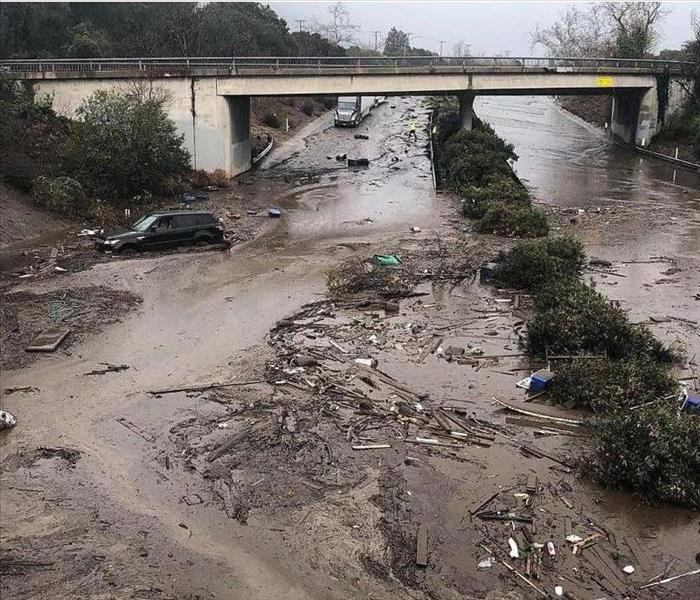Camp Fire Recovery
11/20/2018 (Permalink)
 In a SBFD photo, mud and debris fill the Olive Mill Road underpass on U.S. 101 from flooding on Montecito Creek in Montecito, CA. Jan 9, 2018
In a SBFD photo, mud and debris fill the Olive Mill Road underpass on U.S. 101 from flooding on Montecito Creek in Montecito, CA. Jan 9, 2018
While California continues it's rescue efforts of the hundreds of missing from the most deadly and destructive fire in the state's history, a new menace is emergi: debris flow. Rain is coming to the northern California region as soon as tomorrow morning, and the fires have primed the soil for another disaster that can claim yet more lives.
This is a lesson that California has learned less than a year ago in the coastal town of Montecito. Last December, the Thomas Fire burned through the hills right up to the edge of town. Only 7 homes were lost in the fire, but only a month later the scorched hills outside of town let loose a storm-driven debris flow that enveloped the town, killing 21.
Mudslide Warning in California
The problem is a fundamental change to the soil itself. When a wildfire burns vegetation, it releases organic compounds. The soil, which normally absorbs water, is turned hydrophobic due to the organic compounds. You can pour a bottle of water on this burned soil and it’ll bead right off, as if the dirt were polished marble. The water will pool up and sit there, and it can take more than an hour for it to penetrate fire-scorched soil.
Problem number two: vegetation anchors the soil. When fire burns it away, the soil loosens. Without it, sediment has nothing to hold it in place.
Now hydrologists and meteorologists are keeping a close eye on communities that butt up against these latest fires, where the conditions are set for catastrophic debris flows when the rain comes. The debris flow can carry boulders and trees along with mud, making it more dangerous than a regular flood or a dry landslide.
If you haven’t cleared out in time and the flow comes, the recommendation is to shelter in place—moving to the upper story of your house, for instance. Out on the streets is exactly where you don't want to be, as the flow follows those paths.
It’s a brutal consideration for those trying to recover from the Camp and Woolsey fires, but it’s also an extremely important one. A menace begets another menace.




 24/7 Emergency Service
24/7 Emergency Service